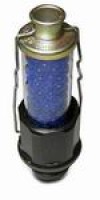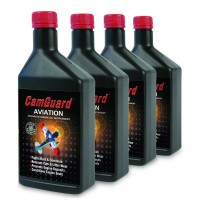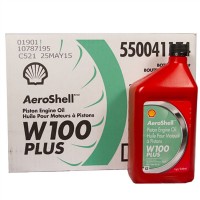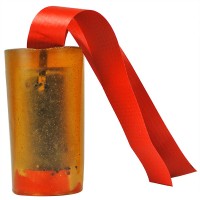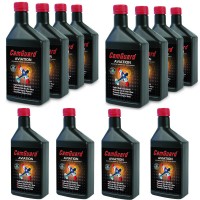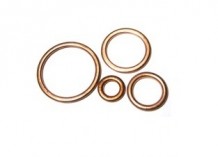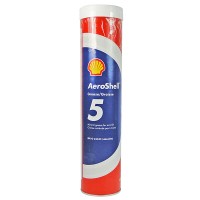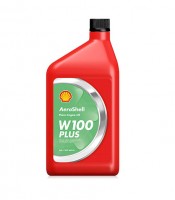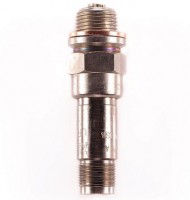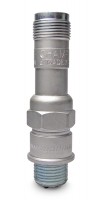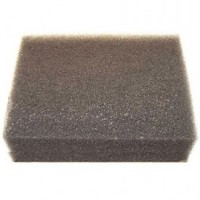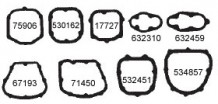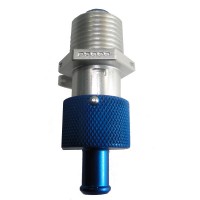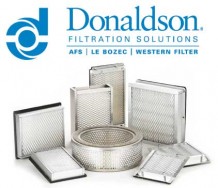Engine Saver
MFR Model# 2039
- JUMP TO
- Overview
- Reviews
- Q&A
- View in Catalog
Overview
Aircraft owners know that an aircraft not flown regularly is subject to rusting of the internal engine parts. This rust causes engine wear and shortens engine life. Water collects in the engine from two sources. First, moisture is a byproduct of combustion. When you shut your engine down, the crankcase is filled with hot gasses containing a high percentage of moisture. As the engine cools, this moisture condenses and water forms. ( This is why you see water droplets on the dipstick cap when checking the oil level.) Secondly, daily changes in temperature, humidity, and barometric pressure force moist air into the engine. Cool evening temperatures then cause this moist air in the engine to condense forming droplets on the precision engine parts. Over time this moisture leads to RUST. Cool air temperatures that occur in the early morning cool the metal engine parts. Whenever the temperature of the metal parts falls below the dew point temperature of the moist air inside the engine, water droplets form. If you can reduce the humidity level of the air inside the engine, (lower its dew point temperature below the outside air temperature,) you can prevent water from ever forming on the engine parts. This is what the Engine Saver does. Oil companies spend millions on developing additives to protect the engine parts from the water droplets and prevent rust formation. However, the best way to protect your engine from internal rust is to prevent moisture from forming in the first place.- No water, No rust! The Engine Saver is an electrically powered device that produces a constant supply of very low humidity, low pressure air. This low humidity air is then introduced into the engine crankcase through the breather. The system builds up a slight pressure in the crankcase. this fills the crankcase with dry air, and the pressure forces the dry air past the piston ring end gap, into the top cylinder area, and finally out an open intake or exhaust valve. The system bathes the entire internal surfaces of the engine with low humidity air preventing the formation of water. The Engine Saver consists of a 110VAC electrically powered low pressure air pump, a chemical dehumidifier which absorbs the moisture from the air passing through it, and a special adaptor for introducing the dry air into the engine. The components are conveniently mounted on a metal base with integral handle for easy carrying. A four ft. tube with the special adapter is supplied to fit into the engine breather tube where it extends from the bottom of the cowl. The adapter is fitted with a series of foam disks that easily shape to fit most engine breather tubes. The updated Smart Engine Saver is a microprocessor controlled unit that has been designed to provide good engine protection while maximizing the useful time before the chemical dryer has to be recharged. The Smart Engine Saver is easy to use. At the end of a flight, simply push the Engine Saver adapter into the end of the engine breather tube where it extends from the bottom of the cowl, and plug the unit into a standard electrical outlet. When initially turned on, the Smart Engine Saver will run continuously for one hour. This hour of operation will purge the moist gasses from the crankcase, and as the engine cools, prevent the formation of water from the combustion byproducts. It also establishes a dry environment within the entire engine. After the initial one hour operating, the system starts the monitoring mode. The electronics measure the temperature and humidity levels of the outside air, and based on this determine how long to turn the pump on. in order to achieve good engine protection while maximizing the operating life of the chemical dryer material. On hot humid days, it operates the pump for longer times. On cold dry days, it operates it less. The system consumes only 3 watts of power and can run for a full month for less than a dollar. The dryer assembly efficiently removes moisture from the air. The dew point of the air leaving the dryer can be lower than -100 degrees F. This means that the temperature of the metal engine parts would have to drop lower than 100 degrees below 0 F before moisture would form in your engine. The system is designed to run continuously and unattended. The dryer has sufficient capacity to effectively remove moisture for at least 30 days. (actual time is dependent on temperature and humidity conditions at your location. Some owners report getting up to 4 months useful life before recharging). The dryer material contains indicator beads that change color as moisture is absorbed. When the unit is new, the beads are blue. As moisture is absorbed, the beads turn red. When most of the beads have turned red, The dryer must be removed and the desiccant recharged. This is accomplished by placing the beads in an oven and heating them until they change back to the original color. The Engine Saver will work with most piston engines, including those that have an oil separator. It does not require any installation. It does not require FAA approval. You can click on TEST DATA to read a test report on the performance of the Engine Saver, or click on 2039m to view the instruction manual for the Engine Saver.
|
WARNING: Cancer and Reproductive Harm - www.P65Warnings.ca.gov. |
Reviews
Very easy to connect to the PA28-181 oil vent. Appears to be a great idea to minimize the corrosion in the engine.
Engine Saver
The engine saver is good just very expensive. I could have built something very similar for a tenth of the cost but didnt have the time.
Engine Saver
I’ve been using an Engine Saver for about 8 years now with no problems -2 years on my Debonair and 6 years on my RV-6A. I may be a bit more anal than most other folks about engine condensation though because upon engine shut down I also remove the oil dipstick and hold a shop vac hose about an inch above the filler for about 30 seconds to suck out all the moisture-laden acidic fumes from the crankcase before hooking up the Engine Saver. It all seems to be working well for me so far.
This is a device that should really help with the high humidity environment here in South Texas. Similar drying technology as anesthesia machines, the granules absorb moisture from the air that is pumped into the crankcase to decrease the effect of moisture setting up corrosion inside the engine. My LX7 does not have a breather tube (turbo), so I fashions a closed cell foam plug and inserted it in the oil filler neck. Great product ..so far!
Engine Saver
Ive had the engine saver for about 18 months. It works very well. I use it as advertised, sending the dry air up the breather tube. With fresh desiccant, relative humidity will drop to 30% or less which is great. A key issue is to make sure the foam rings which surround the tubing and create a snug seal with the breather tube are inserted past the ice hole. Otherwise you are not pumping dry air into the engine - your dry air will leak out the ice hole otherwise. One question is how to replace those foam rings? They get chewed up from the ice hole and Im now at a point where I need to replace them.
Excellent Service
Easy and complete install time will tell on the performance. My airplane is in a very moist environment.
Works as advertised. Setup instructions could be significantly improved with step by step pictures . Operating mode indicator lights had to be re-secured.
I just hooked it up, which was easy and self evident. I would give it 5 stars if I had used it a while. It appears to be working but I wont know for a while.
Q&A
Please note, Aircraft Spruce's personnel are not certified aircraft mechanics and can only provide general support and ideas, which should not be relied upon or implemented in lieu of consulting an A&P or other qualified technician. Aircraft Spruce assumes no responsibility or liability for any issue or problem which may arise from any repair, modification or other work done from this knowledge base. Any product eligibility information provided here is based on general application guides and we recommend always referring to your specific aircraft parts manual, the parts manufacturer or consulting with a qualified mechanic.
No, the air will pass through the oil, and the engine saver with a little time will dry up the moister in the aircraft. It is normal that the oil and some moister comes out the tube. When a engine shuts down, the hot gas turns to moister/water. That is what causes problems for the engines. The engine saver dries up the moister. Any water in the breather tube will not flow back into the engine saver.
15"L x 5-3/4"W x 10-1/4"H
Yes, it does come with the hose and other parts to install. You can view test data and the installation instructions by clicking on the links at the end of the overview description on our web site.
The average lifespan of the pump is around 3-4 years.
Per supplier: Our unit has a low level air output, it is not designed to be split between two engines. I do know some of our customers have done it and have not had any issues, but we couldn't guarantee enough airflow to maintain positive pressure in both engines to keep the outside air from coming in.
They turn blue when they are dried out. The vendor said, to start at 300 degrees for about 45 minutes and then check every 15 minutes after that until blue.
Unless there is an excessive amount of oil coming out of the breather it should not make it into the unit or dessicant beads.
Yes they are universal.
Approx 9.5lbs.
Yes, we do. Please see Part number 07-03400 for example.


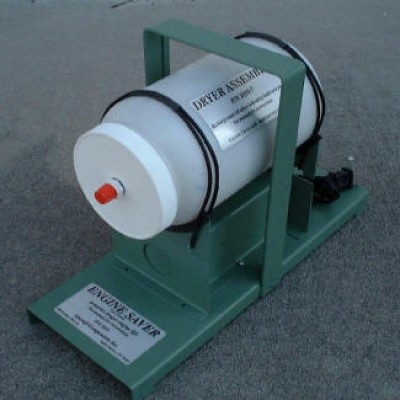





 FREE Shipping
FREE Shipping

